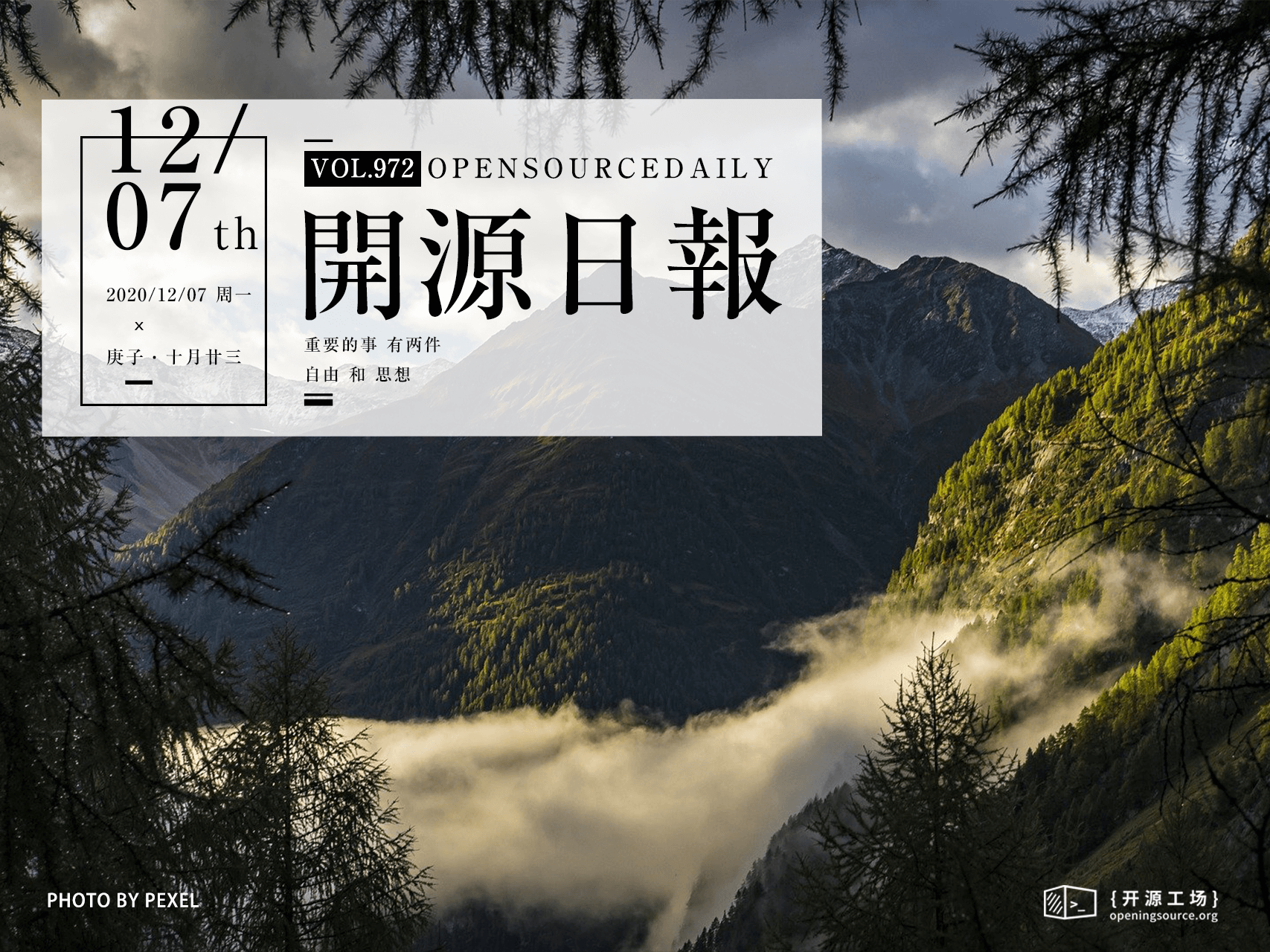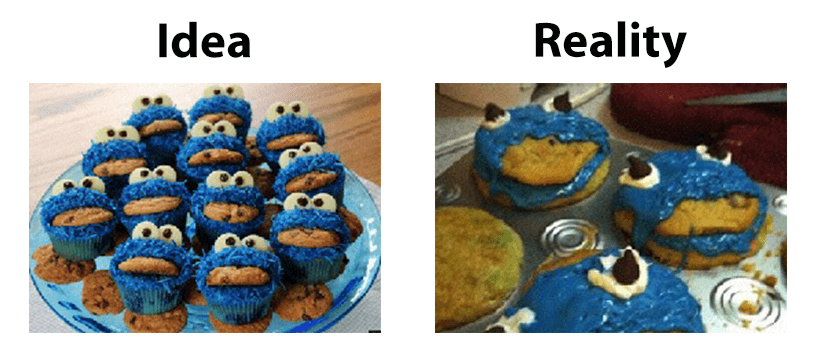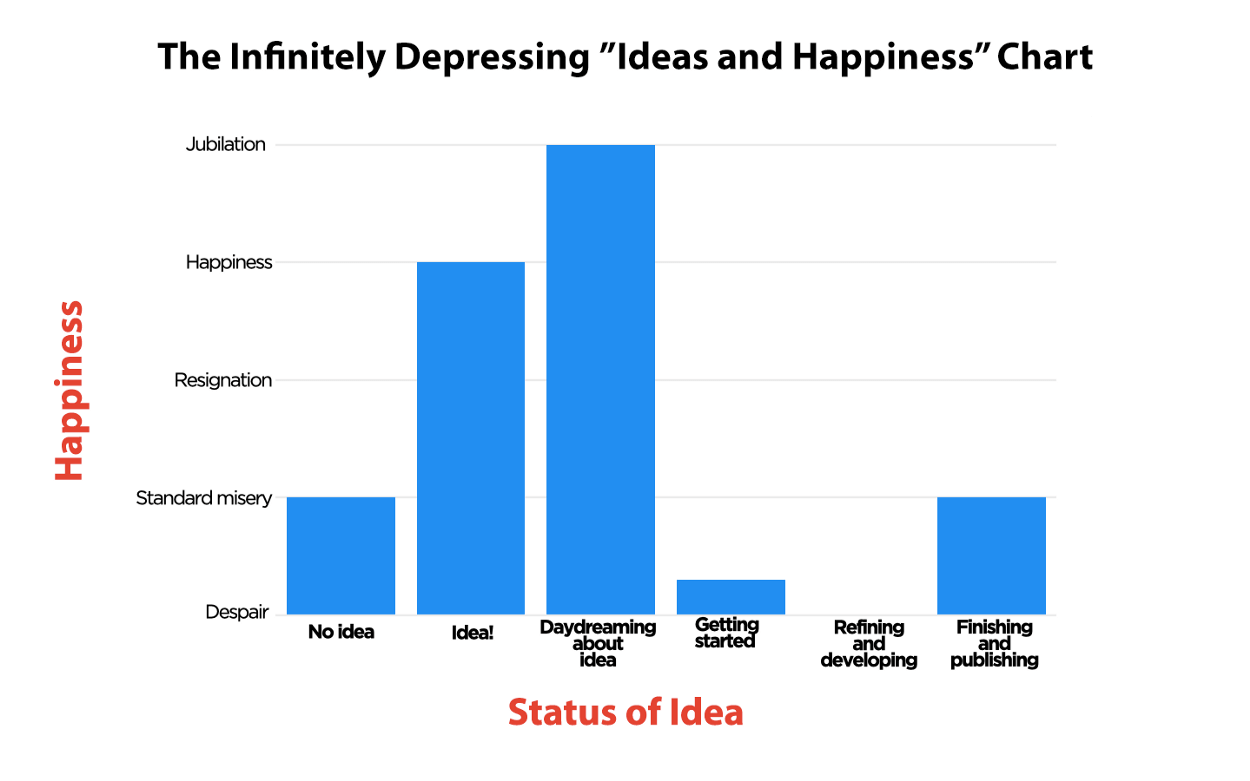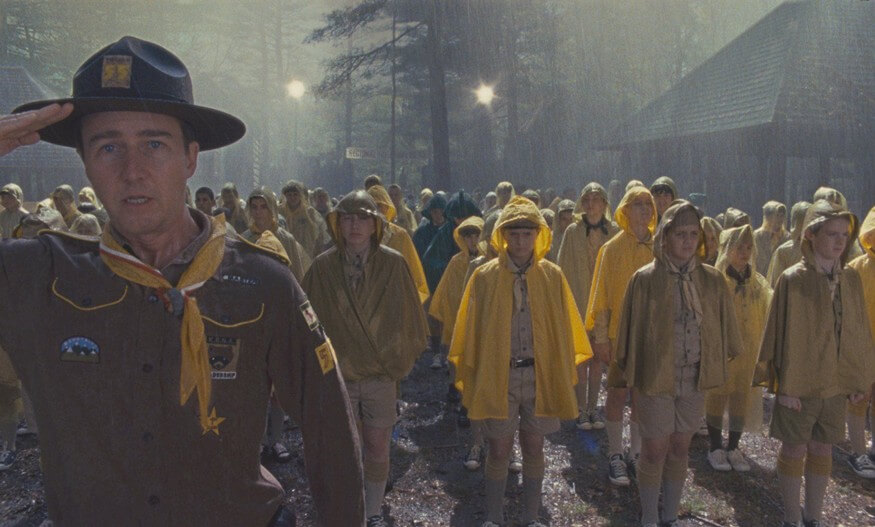今日推荐开源项目:《无人机模拟器 UAV-simulation》
今日推荐英文原文:《This One Chart Explains Your Entire Relationship With Ideas》

今日推荐开源项目:《无人机模拟器 UAV-simulation》传送门:项目链接
推荐理由:该项目为基于基于 Cesium 的无人机飞行模拟器,有非常详细的导航和发动机等模块的数据,支持离线地图。
今日推荐英文原文:《This One Chart Explains Your Entire Relationship With Ideas》作者:Jack Shepherd
原文链接:https://medium.com/swlh/this-one-chart-explains-your-entire-relationship-with-ideas-7e51202587bb
推荐理由:大脑:这个主意棒极了!手:并不。
This One Chart Explains Your Entire Relationship With Ideas
The Creative Process, in one infinitely depressing chart
The key thing to remember about ideas is that having one is usually much better in theory.The first big problem comes from the temptation to fill up the vast gulf between conception and execution with anything other than the grim and brutal work of twisting your idea into something that can exist out in the world. We’ll come back to this.
The second big problem is that once your idea comes into contact with the corrosive atmosphere that is reality, it is going to change, inexorably, into something else. Impurities will be introduced. Compromises will have to be made. The thing you produce will not look like the thing you imagined.
 This brings us back to problem number one. Every serious creative endeavor is an all-out battle to manage the lopsided relationship between your idea in its pure, unadulterated form … and the broken, stitched-together thing that it must inevitably become before it limps out into the world.
This brings us back to problem number one. Every serious creative endeavor is an all-out battle to manage the lopsided relationship between your idea in its pure, unadulterated form … and the broken, stitched-together thing that it must inevitably become before it limps out into the world.
The task of managing this deeply dysfunctional relationship is like steering a boat on a narrow strait between two dangerous cliffs: On one side is the danger that you will fall in love with your idea in its perfected state—dreaming about the accolades and awards you will receive once it’s safely out in the world; imagining all the infinite possibilities it contains. On the other side is the danger that you will despair when you see what your idea is actually becoming as you shape it—obsessing about its imperfections; agonizing over the jagged lines and smudges you’ve introduced onto your once pristine canvas.
The whole process is, to put it bluntly, a massive pain in the ass. I like to visualize this with something I call “The Infinitely Depressing Ideas and Happiness Chart.” It looks like this.

(Photo: Jack Shepherd)In the life cycle of an idea, there is only one truly satisfying moment, and it’s the moment when you have it. In its untarnished form, it is beautiful to look at, thrilling to contemplate, and fun to play with. It is incredibly tempting to just keep it here, where no harm can come to it. Unfortunately, the rest of the process is a minefield, and—importantly—it’s especially dangerous because each new setback is in direct conflict with the beautiful lie that got you started on this whole lark: That your idea was already perfect.
I like to think about ideas a lot like I remember Boy Scout camp being:
- Not much fun before
- Definitely not fun during
- Not much fun after
- But usually a good experience in retrospect

(Photo: Focus Features)This might seem, as far as advice on creativity goes, ever-so-slightly bleak. But I have found it to be an immensely useful weapon when it comes to the arduous work of ploughing on with an idea when your brain is telling you it’s not working, or it’s not right, or it’s not going to be worth it. It doesn’t mean (by any stretch) that every thing you make is going to be a masterpiece, but the knowledge that the nagging doubts that beset the work are just as much a lie as the overblown expectations that got you into it in the first place is often just the tool you need to forge ahead. And it’s always better to make something than it is to sit around thinking about it.
下载开源日报APP:https://openingsource.org/2579/
加入我们:https://openingsource.org/about/join/
关注我们:https://openingsource.org/about/love/
